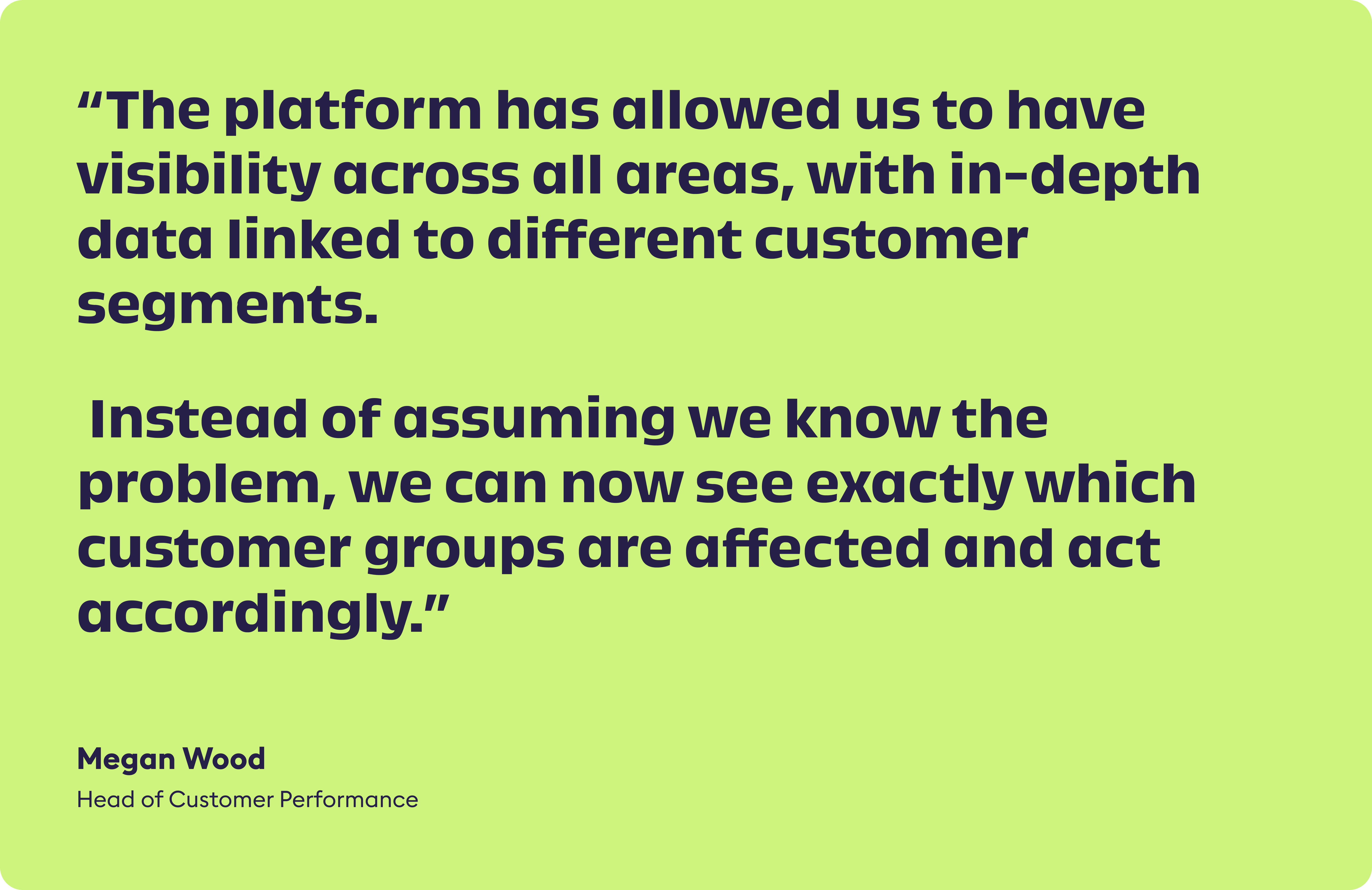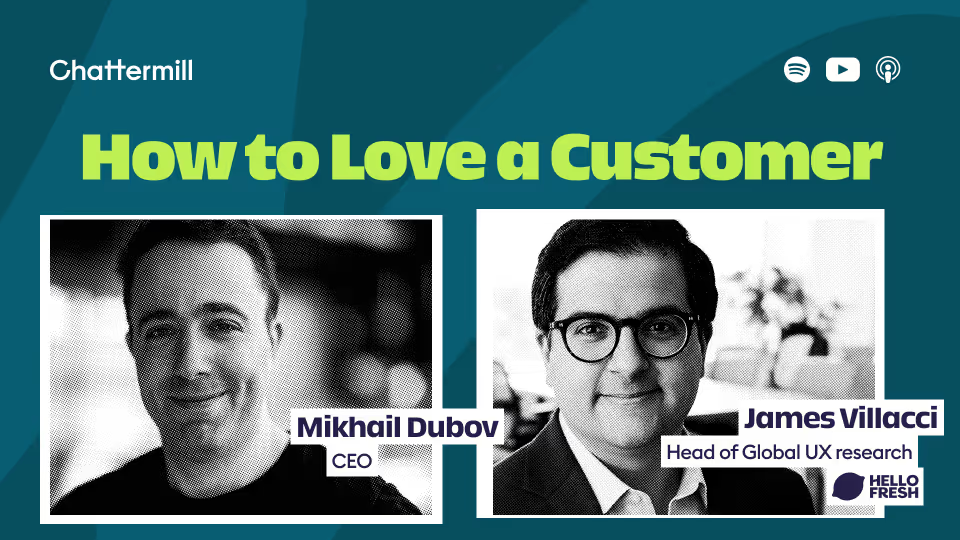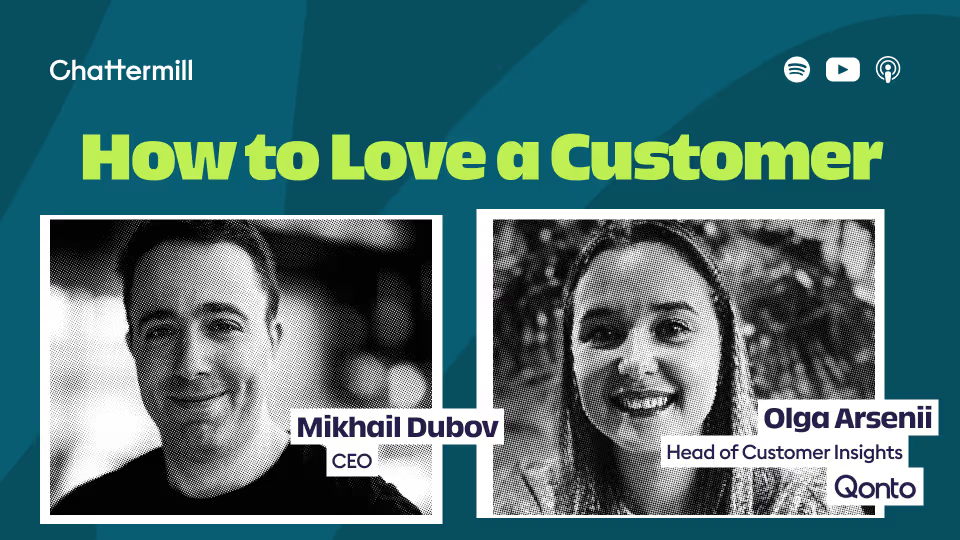Mindful Chef is a UK-based healthy recipe box service, serving over 45,000 active customers. Since its launch, the company has delivered over 30 million meals, continuously expanding its market share in the industry.
We spoke with Megan Wood, Head of Customer Performance at Mindful Chef, to understand how they tackled rising churn rates and rebuilt customer retention.
Key results:
- 20% NPS increase in 12 months, consistently hitting retention targets
- 50% sentiment boost for family customers after resolving portion size complaints
- Increased retention and CLTV, after reducing customer complaints

Inside Mindful Chef's retention strategy
Q: Tell me more about your role in the organization.
Megan: I’m the Head of Customer Performance at Mindful Chef, and I’ve been with the company for over five years now. My role spans across retention, which is crucial for our subscription-based business, and focuses on keeping customers engaged with Mindful Chef.
On the other side, I also look after the acquisition of new customers, ensuring we’re onboarding great quality customers.
Q: What would you say are your major objectives?
Megan: Our biggest focus right now is strengthening our already strong retention metrics. Even though it’s been a few years since the peak of Covid, we’re still seeing the effects. While we saw a significant spike in growth during that period, we also faced increased churn in the months that followed.
So, we’re focused on keeping our active base strong, getting customers excited, and increasing their frequency and average order value (AOV). We achieve this through various marketing efforts, but our main focus is on the quality of their experience. This spans all areas of the business. From the recipes on the menu to the delivery service.
Q: It seems like Mindful Chef is investing a lot into the existing customer base. Can you tell me a little bit more about that?
Megan: Sure. We’ve definitely had growth periods, but retaining our customers is efficient, too. It’s a cheaper cost-per-acquisition for us to keep existing customers happy than to acquire new ones. Plus, our top customers bring a great deal of value - they provide us with recurring revenue and valuable feedback, and they’re highly engaged from a community perspective.
The business sees a lot of value in keeping customers long-term. Once a customer reaches box number 10, they typically become a very loyal customer.
So, we focus on that early lifecycle - getting customers through to box 10 - because once they get there, we know they’ll stick with Mindful Chef for a long time.
Q: How do your top customers contribute to the growth of the business?
Megan: Once customers reach top customer territory, they are incredibly loyal - they order often and generate word-of-mouth referrals.
About 10% of the customers we acquire come from some form of referral. Our top customers really become brand advocates. They are incredibly close to the business in a community sense, and it’s really great to see.
Understanding the churn problem
Q: What prompted you to start analyzing customer feedback in more depth?
Megan: Over the past couple of years, we’ve faced the challenge of how to protect and improve our customer retention, especially after the peak during COVID when people were ordering recipe boxes more often. Coming out of that, we needed to rethink how to maintain that retention.
Plus, we were seeing higher churn, and the challenge was that we didn’t fully understand some of the reasons behind it, or only realized the issues after customers had already left.
We reframed our approach - instead of asking how to earn customer loyalty, we focused on how we could demonstrate our loyalty to them. We realized, even if we do a lot of things right within the business, if customers’ boxes have issues, like a late delivery or incorrect items, they’re not likely to stay with us.
This shift led us to prioritize real-time feedback trends over infrequent, large-scale surveys, giving us faster insights into what drives sentiment changes. We had a lot of questions, but we knew NPS would be the key metric. Our goal was to identify:
What specifically improved NPS, and how can we continually improve it?
What were the things that detracted from NPS, and how can we fix them?
How was NPS related to growth?
Q: What challenges did you face before using Chattermill to analyze customer feedback?
Megan: We were tracking customer feedback through team-specific metrics like complaints per thousand units or cancellation feedback. However, this approach only captured feedback from customers who were experiencing the worst issues. We found that our top customers often didn’t report certain problems, which created a blind spot for us.
Without a solution like Chattermill, we had slow reaction times to dealing with issues, whether they were technical problems like ingredient issues, packaging, or tech glitches, or even specific recipe feedback on a weekly basis. Some issues went completely under the radar.
Q: What was the impact on the team at the time of not having a solution?
Megan: To be honest, it meant we couldn't have visibility across all areas. We relied heavily on analysts and one-off surveys, which provided valuable insights but quickly became outdated. It was also much more time-consuming to analyze different customer segments.
We always wanted to dig deeper - how are our customers feeling this week? How are our vegans feeling? What about non-vegans, existing customers, or new customers? Doing this level of analysis manually was overwhelming. While we could run big projects to drill down into specific topics, we couldn’t maintain that level of detail across all teams.
Q: There are a lot of different platforms out there - why did you choose Chattermill?
Megan: One of the biggest reasons was ease of use. We wanted the data to be accessible to anyone in the business, not just a single person or team. Our goal was to create power users across the company, so teams could explore the data themselves rather than just receiving reports and being told to check them occasionally.
Time-saving was also crucial – we needed fast data and insights to react quickly to time-sensitive problems.
Previously, feedback analysis was a manual process, relying on sporadic reviews of cancellation comments whenever time allowed. With Chattermill, we’ve automated this process, ensuring continuous monitoring and immediate flagging of issues.
From blind spots to clear signals
Q: How has Chattermill changed the way you spot and tackle customer issues?
Megan: The platform has allowed us to have visibility across all areas, with in-depth data linked to different customer segments. Instead of assuming we know the problem, we can now see exactly which customer groups are affected and act accordingly.
It also means that if an issue appears in our NPS data, it’s not just stored in a spreadsheet or data warehouse waiting for someone to review it. Anyone in the business can check it in seconds, see emerging problems as they happen, and act quickly rather than waiting weeks to investigate.

Q: Can you walk me through how you’re using the platform on a daily basis? What kind of reports have you set up to track retention?
Megan: We like to keep a close eye on the data in real-time. Every Wednesday, during our company-wide meeting, we show a slide with our NPS score. We track it in a dashboard, so we can quickly see if it's been a good or bad week based on what customers are loving or not loving. We also have dashboards for different teams, where we report on trends from the past week or so.
During these meetings, we’ll often highlight themes like, “Last week, our NPS was 57, recipes were at 65, but delivery was only 40 - what’s going on there?”
It’s our way of catching trends early. Besides NPS, we also track traditional metrics like complaints per thousand units, but NPS really gives us a big-picture view. It helps us understand sentiment across areas like menu variety or recipe preferences.
By making NPS a key weekly metric, we've brought the importance of retention into our team discussions, helping everyone understand how their individual efforts contribute to retention and the overall customer experience. This alignment has played a crucial role in driving our success.
Q: Can you share an example where the NPS data helped you improve something specific?
Megan: Sure! We noticed that families were rating portion sizes lower than smaller households. After digging into the comments, we found complaints about ingredients like chicken thighs and rice not being enough.
We ran focus groups with family customers and confirmed the issue. Our respondents mentioned that they often felt the portions weren't enough, especially when cooking for multiple people. In response, we increased the portion sizes for families and added more chicken thighs.
This small change boosted customer sentiment on portion size by 50%.
Q: That's a great example! Have you seen a positive change in the NPS for that group since you made the adjustments?
Megan: Yes, we’ve definitely seen an improvement in the family segment. It was a big win for us, especially since it came from listening to customer feedback.
Q: Any other interesting insights from the NPS data that led to improvements?
Megan: Another example came from the same dashboard, which flagged that sentiment about cooking times and preparation complexity was really low across all customers.
Before Chattermill, we didn’t have a way to collect feedback on things like timing or which pots and pans to use outside of NPS. We sent out a survey and redesigned the layout of the recipe magazine to make it easier for customer to follow. After this change, 90% of customers found the new version easier to use.
This was a great example of how using NPS data led to cross-team collaboration. The operations team, tech team, and creative team all worked together on it, and we were able to quickly make changes based on real customer feedback.
Measurable wins
Q: Could you share how the insights from Chattermill helped with retention and customer satisfaction?
Megan: With Chattermill, we've taken a more proactive approach to fixing recurring issues, and we’ve seen complaints go down and our NPS score rise as a result. Over the last year, our NPS score has improved by 20%, and our customer retention is the best it’s ever been. Our customer lifetime value has also increased.

Q: Those are huge results for your team. Congratulations!
Megan: Thank you! It's been a really positive year for us, and a lot of it comes down to focusing on the customer experience and using the right tools to listen to their feedback.
Q: How much of a role would you say Chattermill played in driving the impressive results you've achieved in addressing customer feedback and concerns?
Megan: Chattermill has been instrumental in helping us gain a deeper, more detailed understanding of customer feedback. It’s allowed us to move beyond general assumptions and instead identify specific issues affecting particular customer groups.
The platform has also eliminated the need for manual data processing or waiting for weekly reports. Now, anyone in the business can access real-time feedback and address emerging issues immediately.


.png)












